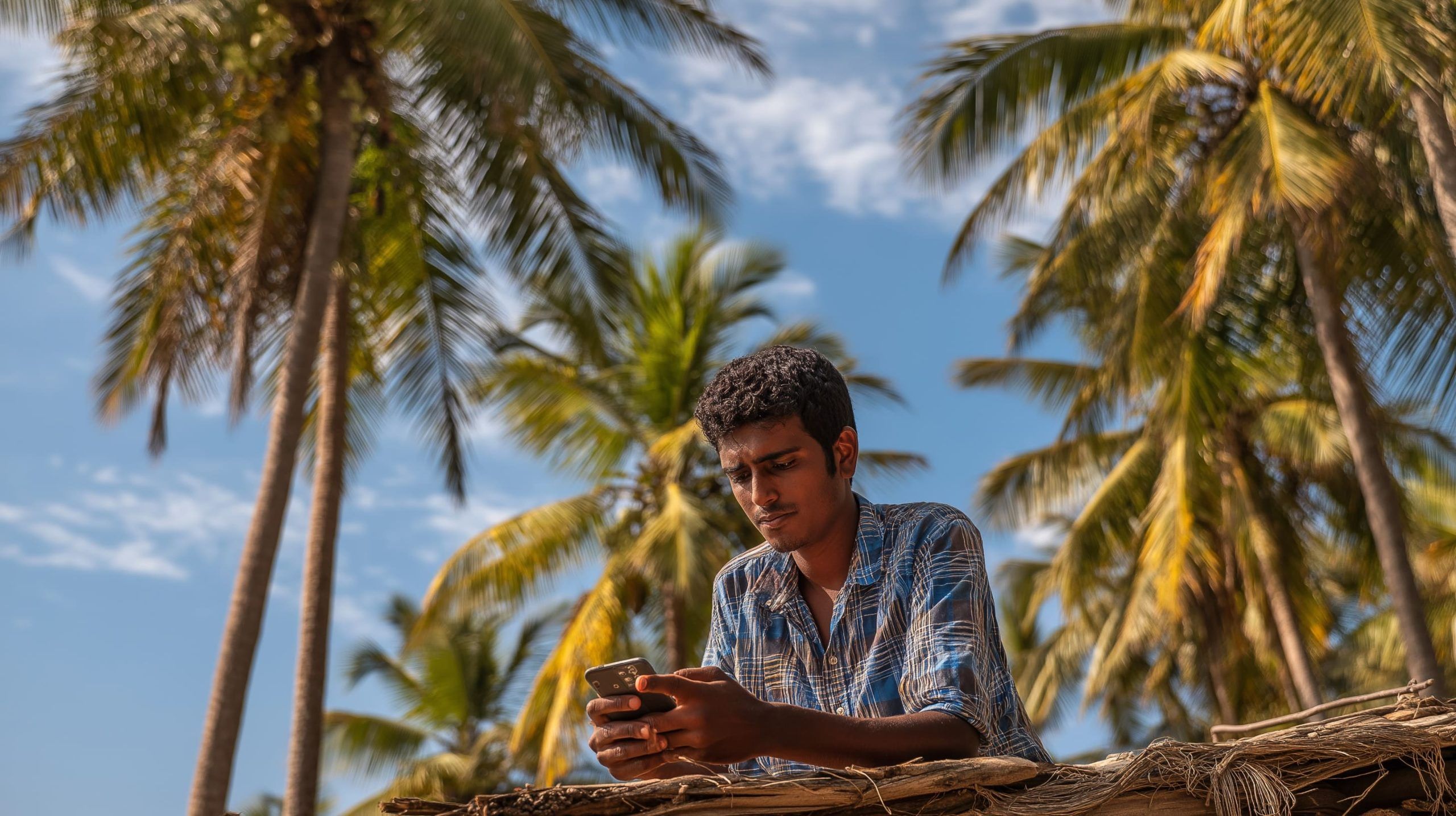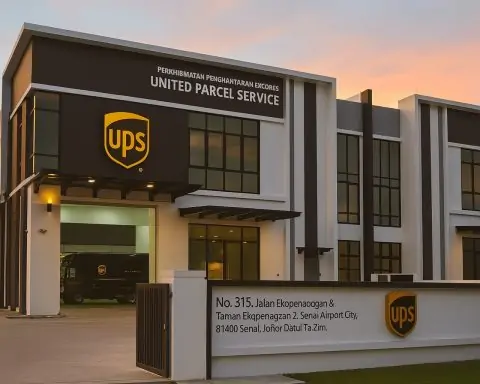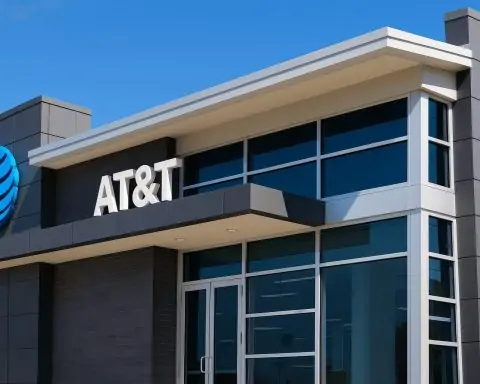- As of early 2025, Sri Lanka has 29.3 million mobile subscriptions, exceeding its population.
- SLT’s national fiber backbone spans about 45,000 km.
- By mid-2022, SLT had infrastructure for 1 million fiber connections, with about 500,000 households connected, and aimed to reach 2 million by end-2023.
- 4G LTE coverage is essentially 100% of the population as of 2024, with 2G nearly 100%.
- Dialog Axiata and Mobitel have begun pre-commercial 5G trials, with live test zones in Colombo delivering speeds over 500 Mbps.
- TRCSL licensed SpaceX Starlink Lanka in August 2024 to provide nationwide satellite broadband under a five-year license.
- In March 2025, Sri Lanka paused Starlink rollout over national security concerns and requirements for lawful intercept.
- The cost of 1 GB of mobile data is about $0.25, placing Sri Lanka among the world’s cheapest data, with 1 GB data typically under 0.5% of monthly GNI per capita.
- About 80% of the population is rural, and rural internet penetration was around 56% in 2024.
- There are over 800 Nenasala rural IT centers, and the government started the Free Public Wi-Fi program in 2015 with about 1,000 locations.
Introduction and Key Indicators
Sri Lanka’s internet landscape is a rapidly evolving mix of fixed fiber broadband, widespread mobile networks, and emerging satellite services. As of early 2025, internet usage has reached over 12.4 million individuals (about 53–56% of the population) [1] [2]. Active mobile connections even exceed the population count (with 29.3 million mobile subscriptions reported) due to multi-SIM usage [3]. The country has nearly 23 million broadband subscriptions when counting both fixed and mobile internet accounts [4] [5]. Table 1 summarizes the major internet service providers and their coverage in Sri Lanka.
Table 1: Major Internet Providers in Sri Lanka and Their Networks
| Provider | Type of Service | Coverage & Network Technologies | Notes and Market Position |
|---|---|---|---|
| Sri Lanka Telecom (SLT) / SLT-Mobitel | Fixed broadband (fiber, DSL) and Mobile (via Mobitel) | National fiber backbone (45,000 km) linking all districts; Fiber-to-the-home in urban and semi-urban areas; Mobile arm covers 2G/3G/4G nationwide [6] [7] | Oldest telecom operator; dominant fixed-line provider. Around 500,000 homes on fiber by 2022 [8], aiming for 1–2 million. Second-largest mobile operator with ~7 million subscribers [9]. 5G trials ongoing [10]. |
| Dialog Axiata | Mobile (2G/3G/4G; fiber broadband via Dialog Broadband) | Widest mobile coverage (nearly 100% 4G population coverage) [11]; extensive LTE and fiber networks in metro areas | Largest mobile operator (~50% market share, rising to ~60% after acquiring Airtel in 2024 [12] [13]). Also a leading fiber ISP in cities. Conducting 5G trials [14]. |
| Hutchison Sri Lanka (Hutch) | Mobile (2G/3G/4G) | Nationwide coverage (after merger with Etisalat in 2018) [15]; emphasis on urban and some rural areas with 4G | Third-largest mobile operator (~10–15% share). Offers mobile broadband; focuses on competitive data pricing. |
| Bharti Airtel Lanka | Mobile (2G/3G/4G) | Moderate coverage, mainly urban centers and towns; roaming agreements for wider 2G/3G | Smallest mobile operator (under 5% share). Merged with Dialog in 2024 (Airtel brand to be integrated) [16]. |
| Lanka Bell | Fixed wireless & fiber (limited) | Fixed LTE and some fiber in urban areas; legacy CDMA network (now phased out) | Independent fixed broadband operator. Offers wireless broadband in areas not reached by fiber. Smaller market presence compared to SLT/Dialog. |
| Lanka Communication Services (LankaCom) | Enterprise data & ISP (facility-based) | Fiber and VSAT links for businesses; nationwide corporate coverage | Facility-based ISP licensed for data communications [17]. Caters to enterprises and banks (including VSAT for remote sites). |
| LEARN (academic network) | ISP (non-profit) | Connects universities and research institutions via fiber backbone | Government-backed academic network (not for general public). Drives campus connectivity and R&D networks. |
| Starlink Lanka | Satellite internet | Licensed for country-wide satellite broadband; service pending | Received regulatory license in Aug 2024 [18] to offer SpaceX Starlink LEO satellite internet. Rollout paused in 2025 pending security regulations [19] (see Satellite section). |
(Sources: Telecommunications Regulatory Commission of Sri Lanka (TRCSL) reports [20] [21]; operator disclosures and news [22] [23].)
Fiber Broadband in Sri Lanka (Fixed Internet Access)
High-speed fixed broadband in Sri Lanka is primarily delivered via fiber-optic networks, supplemented in some areas by DSL (telephone lines) and fixed wireless broadband. Sri Lanka Telecom (SLT) – the semi-government incumbent – and Dialog Broadband (part of Dialog Axiata) are the dominant fiber broadband providers, together serving the bulk of the 2.54 million fixed broadband subscriptions in the country [24] [25]. Lanka Bell and a few smaller ISPs hold a minor share of the fixed internet market. Fixed broadband penetration remains relatively low – Sri Lanka ranked only 131st of 153 countries for home broadband penetration in a 2025 assessment [26] – but it is growing steadily from this low base [27] [28].
Coverage and Infrastructure: Fiber networks now reach all 25 districts, focusing on urbanized regions (Colombo, Kandy, Galle, etc.) and gradually expanding to smaller towns. SLT has built a national fiber backbone (~45,000 km) that interconnects cities and links to multiple international submarine cables [29]. This backbone supports both fixed broadband and mobile backhaul, enabling higher speeds nationwide. SLT and Dialog have aggressively rolled out Fiber-to-the-Home (FTTH) in the past few years. By mid-2022, SLT had enabled infrastructure for 1 million fiber connections, with about 500,000 households already connected via fiber [30]. It aimed to double that (2 million fiber customers) by end of 2023 [31] [32], though economic challenges slowed progress (more below). Dialog has similarly expanded its “Dialog Fibre” broadband service in metro areas, offering packages up to 100–150 Mbps for home users [33].
Legacy ADSL copper broadband is gradually being replaced by fiber. In less accessible rural areas, operators deploy Fixed 4G/LTE broadband (home routers using mobile networks) as an interim solution where laying fiber is not economical. Lanka Bell and others also provide fixed LTE or WiMAX links to customers beyond the fiber footprint.
Internet Speeds: The advent of fiber has boosted fixed-line speeds significantly. SLT’s fiber plans now offer up to 100–300 Mbps download rates [34] [35], whereas older ADSL connections were limited to single-digit Mbps. Still, the median fixed broadband download speed in Sri Lanka is about 22–23 Mbps [36] [37], indicating many users are on entry-level plans or wireless links. This median is well below global averages – for context, the global median fixed download is ~60+ Mbps [38]. Nonetheless, fiber connectivity is improving quality: users experience low latency and more reliable throughput on fiber compared to overloaded wireless links.
Service Offerings and Pricing: Fixed broadband packages in Sri Lanka include both unlimited plans (often with Fair Usage Policy caps) and metered data plans. A typical home fiber package (e.g. 100 GB quota at 20 Mbps) costs on the order of LKR 3,000–5,000 per month (~$9–15) depending on speed and data volume, while “unlimited” plans at 100 Mbps+ may cost LKR 7,000–10,000 ($20–30) – still affordable by global standards. In fact, one analysis listed Sri Lanka’s average monthly internet cost at around $9.48 (one of the cheapest in Asia) [39]. These low prices have made broadband accessible, but also squeeze provider revenues (ARPU), impacting their ability to invest (as discussed later). Installation fees are often subsidized; for example, Dialog advertises fiber connection for ~Rs. 12,500 (often waived during promotions) [40].
Urban–Rural Gap: Fiber broadband is concentrated in urban and suburban areas, leading to a digital divide. Rural households seldom have fiber lines; many still rely on mobile data or have no access at all. The government and ISPs acknowledge this gap and are working on expansions (see Rural Access section). Projects like SLT’s accelerated fiber program explicitly aim to “empower all communities, in every district, with high-speed fiber” [41] [42], and by 2022 fiber had reached some villages that previously had no broadband. Still, bridging the last-mile in remote regions (especially estates, islands, and mountainous villages) remains challenging. For those areas, wireless solutions (4G/5G or even satellite) are viewed as the likely way forward.
Mobile Internet: 3G, 4G, and the Path to 5G
Mobile broadband is the primary means of internet access for most Sri Lankans, given the wide coverage and affordability of cellular networks. There are currently four mobile network operators (MNOs) – Dialog Axiata, SLT-Mobitel (branded Mobitel), Hutchison Lanka, and Bharti Airtel – though consolidation is underway (Airtel is merging into Dialog). Together, these operators served 20.6 million mobile broadband subscriptions (3G/4G) by the end of 2024 [43] [44]. Mobile internet usage surged in recent years, especially with the adoption of 4G LTE smartphones and the shift to online services during COVID-19 [45].
Coverage: Sri Lanka has achieved near-universal mobile network coverage. 3G networks cover ~97.8% of the country’s population, and 4G LTE coverage is essentially 100% as of 2024 [46] [47]. In practical terms, almost every inhabited area has at least a basic mobile data signal, although rural coverage can be thin in capacity. The high coverage is confirmed by Opensignal’s user metrics: Sri Lankan 4G users had a 4G signal available over 89–90% of the time on Dialog and Mobitel networks [48] [49] (Airtel and Hutch follow closely behind). This broad reach owes to operators aggressively expanding 4G base stations across all districts, supported by government pressure to achieve “full national coverage” [50]. Additionally, 2G GSM networks (for voice/SMS) blanket nearly 100% of the population, ensuring basic connectivity even in remote spots.
Mobile Operators and Market Share: Dialog Axiata is the market leader, followed by SLT-Mobitel; these two giants account for roughly 70% or more of mobile subscribers [51]. Hutch and Airtel have smaller shares. A noteworthy change is the merger of Airtel Lanka into Dialog – announced in mid-2024 – which will further solidify Dialog’s dominance [52]. Dialog’s subscriber base (previously about 50% of the market) is expected to exceed 60% share post-merger [53] [54]. Mobitel (SLT) has around 7 million subscribers (roughly 25–30% share) [55]. Hutch, after absorbing Etisalat in 2018, has an estimated 10–15% share. Table 2 provides a comparison of the mobile operators:
Table 2: Mobile Network Operators in Sri Lanka (2025)
| Operator | Subscribers & Market Share | Network Technologies | Notes & Developments |
|---|---|---|---|
| Dialog Axiata | ~17–18 million (≈50% pre-merger; >60% with Airtel) [56] | 2G, 3G, 4G LTE nationwide; 5G trials in select areas | Largest operator by coverage and revenue. Acquiring Airtel Lanka in 2024 [57]. Widest 4G reach and consistently top speeds. Pre-commercial 5G available to trial users [58]. |
| SLT-Mobitel (Mobitel) | ~7 million (25–30% share) [59] | 2G, 3G, 4G nationwide; 5G trials (Colombo) | Mobile arm of state-run SLT. Strong second player. Offers both mobile and fixed services (bundles). 5G trial network open to public (free with 5G device) [60]. |
| Hutch | ~4–5 million (10–15% share) | 2G, 3G, 4G (focused in urban & towns) | Formed by Hutch–Etisalat merger in 2018 [61]. Competes on pricing. 4G network expanding but smaller spectrum holdings. No 5G announced yet. |
| Bharti Airtel | ~2–3 million (being merged into Dialog) | 2G, 3G, 4G (cities & key areas) | Smallest operator. Merger with Dialog will phase out Airtel brand [62]. Known for youth-targeted data packs. Now transitioning subscribers to Dialog’s network. |
Mobile Broadband Performance: The quality of mobile internet in Sri Lanka is a mixed picture. On one hand, 4G networks are widely available and have improved users’ experience; on the other hand, capacity constraints and peak-time congestion can degrade speeds. According to Ookla Speedtest Intelligence, median mobile download speed is about 20.2 Mbps in Sri Lanka [63]. This is far below the global median (~61.5 Mbps) [64], reflecting the fact that Sri Lankan operators have limited spectrum and many users per cell site, especially during evening “peak hours.” OpenSignal’s February 2025 report found Dialog had the fastest average download speeds (~19.5 Mbps), followed by Airtel (15.8 Mbps) and SLT-Mobitel (~14.6 Mbps), while Hutch lagged (6.7 Mbps) [65] [66]. Upload speeds are around 4–5 Mbps on 4G networks [67] [68]. Latency typically ranges 30–50 ms on 4G.
Users frequently report “slow internet in peak hours” and sudden drops in quality, a symptom of network congestion and infrastructure limits [69] [70]. In many regions, underinvestment in tower/backhaul upgrades has led to these issues: “wireless connectivity faces added challenges; signal quality can degrade due to physical obstructions, distance, and even rain,” explained a local IT professor [71] [72]. Despite these issues, overall mobile broadband availability and consistency have improved over time.
Affordability: Mobile data in Sri Lanka is highly affordable relative to global prices. The average cost of 1 GB of mobile data is around $0.25 – placing Sri Lanka among the top 15 cheapest countries in the world for data pricing [73] [74]. Many operators offer budget-friendly plans (e.g. 1 GB daily packs for a few rupees, unlimited nighttime data, etc.). By one measure, 1 GB of data is under 0.5% of monthly GNI per capita, well below the UN affordability target [75]. This low pricing has driven adoption, especially among youth and rural users. However, the flip side is that operators earn very low ARPU (Average Revenue Per User), which can limit their ability to invest in network improvements (see Challenges section).
3G and Legacy Networks: Sri Lanka was an early adopter of mobile broadband in South Asia – launching 3G (WCDMA/HSPA) as far back as 2004 and 4G LTE in 2013. Today, 3G is still available as a fallback, but its role is diminishing. With nearly all Sri Lankan mobile users now on 4G-capable devices and networks, 3G usage and speeds have dropped (3G download experience is often only 1–4 Mbps). Industry experts suggest shutting down 3G networks in the near future to free up spectrum for 4G/5G, and even banning import of 3G-only phones to accelerate this transition [76]. Operators and regulators are indeed considering a 3G phase-out plan once 4G coverage is absolute; given 4G now covers 100% population [77], a 3G sunset could occur by 2025–26.
Progress Toward 5G: Sri Lanka is on the cusp of the 5G era. No operator has launched full commercial 5G as of early 2025, but pre-commercial 5G trials have been underway. Dialog Axiata and SLT-Mobitel both began 5G trial networks open to customers with 5G devices (using existing 4G SIMs) [78]. These trials – free of charge – have been live in parts of Colombo and a few other locales, giving users a taste of next-gen speeds. In these test zones, users have reported download speeds well over 500 Mbps on 5G. The government, through the TRCSL, is in the process of allocating spectrum for 5G. The Digital Economy Minister announced that a 5G spectrum auction would be held in 2025, after two years of postponements [79]. TRCSL has already approved Dialog and Mobitel’s trial 5G operations and is preparing the regulatory framework for commercial 5G licenses (including fixed wireless, mobile, and even satellite 5G) [80].
Looking ahead, Sri Lanka’s 5G rollout is expected to leverage existing tower sites and fiber backhaul extensively. Industry sources suggest a possibility of a shared 5G network infrastructure to reduce costs: a “single wholesale 5G network” model (similar to Malaysia’s Digital Nasional Berhad) where carriers share towers and spectrum initially [81]. This could expedite coverage to the whole country despite the tight economy. Eventually, as the market grows, operators could deploy independent 5G networks, but the shared approach might jump-start the technology in 2025–26 [82]. Overall, 5G is seen as key to “better connectivity and enhanced broadband penetration” in Sri Lanka [83], enabling not just faster consumer internet but also enterprise services, IoT, and smart city applications in the future.
Satellite Internet Services: Status and Expansion
Satellite broadband is a nascent but intriguing component of Sri Lanka’s internet mix, poised to play a bigger role in connecting hard-to-reach areas. Traditionally, satellite internet in Sri Lanka was limited to VSAT terminals used by businesses, banks, or remote outposts (e.g. in national parks or for disaster recovery). These services, often provided via GEO satellites by companies like Intelsat or regional operators, were costly and low-bandwidth, thus never mainstream for consumers. However, the landscape is changing with the arrival of Low Earth Orbit (LEO) satellite constellations.
In August 2024, Sri Lanka’s telecom regulator (TRCSL) made a landmark move by licensing SpaceX’s Starlink service [84]. The TRCSL issued a five-year telecommunications service provider license to Starlink Lanka (Pvt) Ltd, allowing it to offer satellite broadband nationwide [85] [86]. This followed high-level discussions between Sri Lankan President Ranil Wickremesinghe and Elon Musk, where the President sought to expedite Starlink’s entry to improve rural connectivity [87] [88]. The Starlink license – effective from 12 August 2024 – was hailed as a significant step to bring high-speed internet to underserved regions via satellite.
Starlink’s Planned Service: With this license, Starlink can theoretically beam internet across all of Sri Lanka’s territory. Starlink’s LEO satellites can deliver 100+ Mbps broadband to a user terminal and have relatively low latency (~20–40 ms), a huge improvement over older satellite systems. It is especially useful for remote rural villages, mountainous areas, or even ships and aircraft, where fiber or mobile signals may not reach. TRCSL initially approved Starlink hardware and packages with localized pricing: reportedly around Rs. 27,000 for the regional kit and higher for the global roaming option [89]. The entry of Starlink is expected to “help close significant connectivity gaps in remote, underserved and disaster-prone regions” of Sri Lanka [90] [91].
Regulatory Hurdles: Despite licensing, Starlink’s rollout hit a temporary snag. By March 2025, the government paused Starlink’s implementation citing national security concerns [92]. The issue arises from the fact that Starlink traffic is encrypted and bypasses local telecom infrastructure – Sri Lankan authorities worried about the inability to monitor or intercept communications for lawful purposes [93] [94]. The new administration demanded that Starlink comply with lawful intercept requirements (i.e. giving a mechanism to access data in case of abuse) [95]. The original license did not spell out such provisions [96]. As a result, the government put Starlink on hold until a solution is reached. This move was part of a broader stance of regulatory sovereignty – “one of the few small states asserting that foreign-operated digital infrastructure adhere to local rules” [97] [98]. An amendment to the Telecommunications Act in 2023 (the first in 28 years) had explicitly introduced new license categories for satellite services like Starlink, showing Sri Lanka’s intent to enable such technology [99]. Now, additional conditions (such as requiring Starlink to route traffic through a local gateway or partner with a Sri Lankan telco) are being considered to satisfy security requirements [100] [101]. Notably, Starlink’s coverage map still lists Sri Lanka as “coming soon” for 2025 [102], indicating that the company is optimistic about eventually launching service once regulatory issues are ironed out.
Other Satellite Players: Sri Lanka is also on the radar of other LEO satellite providers. OneWeb, a UK-based LEO constellation (now part of Eutelsat), has expressed interest in South Asia connectivity [103]. OneWeb could enter via partnerships – for instance, in neighboring India and Pakistan it works with local telecom partners. If Starlink’s experience smooths out the regulatory path, OneWeb and even Amazon’s upcoming Project Kuiper may follow in offering satellite internet in Sri Lanka [104]. Having multiple providers could improve availability and price options for users in remote locales.
On the domestic front, Sri Lanka had its own satellite ambitions. SupremeSAT, a local company in partnership with China, launched Sri Lanka’s first communications satellite (SupremeSAT-1) in 2012. While a proud moment, SupremeSAT’s services were more geared to broadcasting and leasing capacity to other regions, and it did not roll out consumer internet service in Sri Lanka. SupremeSAT holds a license (as of 2023) in the “Other Operator Services” category alongside Starlink [105]. Another entity, Free Sat Lanka, also appears in licenses for DTH and other services [106] [107], but its role in internet provision is unclear or minimal to date.
Outlook for Satellite Broadband: If Starlink (and similar LEO services) clear the final regulatory hurdles, Sri Lanka could see a new era of satellite broadband by late 2025. This would be particularly transformative for small offshore islands, deep rural villages, or disaster scenarios (where ground networks fail). It aligns with Sri Lanka’s need for resilient connectivity – for example, satellite links can back up networks during cyclones or when undersea fiber cables are cut. However, the government will likely insist on some local control. We may see a hybrid model: e.g., Starlink gateways hosted in Sri Lanka or data exchanges that allow monitoring under court orders [108]. Once resolved, satellite internet can be a vital piece in achieving 100% connectivity. It’s also worth noting that satellite broadband is generally more expensive for end-users than terrestrial internet; the initial Starlink kit cost (~LKR 200,000 for global version) is several times the average monthly income. Thus, its role might be as a targeted solution for those who truly lack alternatives, rather than a mainstream choice for urban users who already have fiber or 4G.
Urban vs. Rural Access: Bridging the Digital Divide
Sri Lanka’s urban-rural digital divide remains a core concern in its connectivity landscape. The country’s population is still about 80% rural [109], with many living in small towns and villages where internet options can be limited. While mobile coverage reaches almost everywhere, the quality and type of access differ greatly between Colombo’s city dwellers and farmers in remote provinces.
In urban and suburban areas (e.g. Colombo Metropolitan Region, Kandy, Galle, Jaffna town), residents often enjoy high-speed connections – fiber-to-home broadband, multiple 4G networks, public Wi-Fi hotspots, etc. These regions have become the focus of telecom investments, resulting in better speeds and redundancy. Urban users are more likely to have smartphones and make use of e-commerce, e-learning, and other digital services.
Conversely, in rural villages (estate communities in the central highlands, agricultural regions in the North Central and Eastern provinces, etc.), internet access is frequently limited to a single mobile provider’s 3G/4G signal. Even if coverage exists, the bandwidth may be sparse – for instance, a small number of towers covering a large area leads to slow speeds when many villagers come online at once. The rural internet penetration rate lags behind: overall penetration was 56% in 2024, but it’s implied that rural usage is well below urban usage [110] [111]. A significant portion of rural citizens either remain offline or use the internet only sporadically. Contributing factors include affordability (roughly 24.8% of Sri Lankans live below the poverty line [112], making even cheap data a strain), lack of digital literacy, and limited infrastructure.
Digital Divide Initiatives: Bridging this gap has been a policy priority for over a decade. The government, along with NGOs and private sector, has launched numerous programs:
- Nenasala Telecenters: One flagship initiative is the establishment of rural IT kiosks called Nenasalas. There are over 800 Nenasala centers across Sri Lanka [113]. These are public community centers equipped with computers and internet access, often hosted in temples, libraries, or community halls. Nenasalas offer free or low-cost internet to villagers, along with IT training workshops. They have been highly successful in introducing the internet to remote communities – enabling students to study online, farmers to check market prices, and citizens to access e-government services [114]. The telecenters have significantly raised digital literacy in some underserved areas and are credited with boosting rural internet use in recent years.
- Public Wi-Fi Hotspots: The government’s Free Public Wi-Fi initiative (launched in 2015) set up Wi-Fi access points in popular public locations nationwide. In the first phase, 1,000 public locations – including main bus stands, railway stations, hospitals, parks, and libraries – were outfitted with Wi-Fi zones [115] [116]. Each citizen can use up to 100 MB of free data per month on these networks [117] [118]. As of a few years ago, over 1,176 Wi-Fi zones were active with 300,000+ registered users [119]. This program, led by ICTA with support from all major telcos, specifically targets those who cannot afford regular internet – giving them a basic level of access for education and communication [120] [121]. While 100 MB is modest, it allows checking emails or messengers. The service requires a user to log in with their National ID, which also provides a way to measure usage and ensure security [122].
- ICTA’s Rural Connectivity Projects: The Information and Communication Technology Agency (ICTA) has several projects under its “Digital Sri Lanka” agenda. ICTA Vision 2024 and the draft Digital Economy Strategy 2030 both emphasize expanding digital infrastructure outside major cities [123]. They include plans for ICT hubs in every province, support for setting up telecommunication towers in underserved areas, and incentives for operators to extend fiber backbone to rural towns [124]. One specific goal is to equip over a million rural entrepreneurs with digital tools by 2030 to drive economic growth in villages [125]. Additionally, programs like DIGIECON 2030 focus on digital literacy training at the grassroots, so that once connectivity reaches a village, people know how to use it meaningfully [126] [127].
- Universal Service Fund (USF): Sri Lanka’s telecom sector has a USF mechanism (managed by TRCSL) where operators contribute a portion of revenue to a fund used for expanding services in unviable areas. This fund has been used to subsidize base stations in rural pockets and provide telephony to previously uncovered villages. In recent years, USF projects included installing tower infrastructure in former war-affected regions of the North and East, and extending fiber to public institutions like schools and government offices in rural localities. The USF is also expected to support rural 5G or fiber rollouts when the time comes.
- Private Sector Initiatives: Telcos themselves run corporate social responsibility programs to improve connectivity. For instance, Dialog’s “Nenasa” education platform provided satellite-based distance learning to rural schools (using KU-band satellite links for TV broadcasts). Mobitel has had mobile classrooms and tech buses touring villages to teach ICT. Operators have also done trials with alternative technologies – notably, Sri Lanka even flirted with Google’s Project Loon (balloon-based internet) in 2016. Google Loon tested one of its balloons delivering internet in Sri Lankan airspace as part of an MOU with the government [128]. However, regulatory issues and technical challenges meant Project Loon never progressed to full deployment and the project was eventually scrapped globally. Still, the trial underscored Sri Lanka’s willingness to try innovative methods for rural connectivity.
Despite these efforts, challenges persist. The rural-urban gap in internet penetration and quality is still evident. Many rural users complain of “spotty and begrudgingly slow speeds” on mobile networks during peak times [129] [130]. As one analysis noted, fixed broadband download speeds in rural areas were nearly 50% slower than in cities in some cases [131]. And while 56% of Sri Lankans use the internet, that leaves over 10 million people (mostly rural) who did not use the internet at all in 2024 [132] [133]. Bridging this last gap will require continued investments in infrastructure (towers, fiber, satellite) as well as tackling socioeconomic barriers like poverty and education. The government’s target of achieving 100% internet access in households (projected 5.29 million internet-enabled households by 2024) [134] [135] will need these sustained efforts. On a positive note, the combination of public Wi-Fi, telecenters, and cheaper smartphones has visibly increased digital awareness in villages – many rural youths today access social media and YouTube via their phones, something that was rare a decade ago. The trajectory is towards narrowing the divide, if the momentum can be maintained.
Government Initiatives and Regulatory Framework
Sri Lanka’s policy and regulatory environment has been actively shaping the internet sector’s growth. The Telecommunications Regulatory Commission of Sri Lanka (TRCSL) is the national regulator overseeing licensing, spectrum, tariffs, and service standards. The TRCSL in recent years has taken on an expanded role under new legislation. In July 2024, amendments to the Telecommunications Act were passed (following debates since May 2024) granting TRCSL broader powers over licensing, pricing, and defining “public interest” in telecom services [136] [137]. These changes modernized the legal framework (the first major update in 28 years) to better accommodate new technologies like satellite broadband and to strengthen regulatory oversight.
Key aspects of Sri Lanka’s telecom regulatory framework and government initiatives include:
- Licensing and Competition: Sri Lanka employs a licensing regime with multiple categories (as seen in TRCSL stats: fixed access, mobile cellular, ISP, satellite, etc. licenses) [138] [139]. Currently, three fixed access operators (SLT, Dialog Broadband, Lanka Bell) and three mobile operators (Dialog, Mobitel, Hutch; Airtel under Dialog) are licensed [140] [141]. The market was liberalized in the 1990s and early 2000s, which is why multiple players exist. The government generally encourages competition as a means to lower prices – for example, past administrations gave tax breaks for new entrants like Airtel in 2009. However, due to the small market size, consolidation has occurred (Etisalat’s exit, Airtel’s merger). TRCSL has to balance competition with sustainability; the recent reduction to essentially 3 main mobile operators might improve industry financial health but could risk less competitive pressure on prices.
- National Broadband Policy: Recognizing the importance of internet for development, TRCSL has been formulating a National Broadband Policy (as referenced in ITU documents) [142]. This policy sets targets for broadband coverage, speeds (e.g. a minimum speed to label a service as “broadband”), and affordability. It also outlines strategies like infrastructure sharing mandates (so operators can piggyback on each other’s towers or fiber conduits to avoid duplicate costs) [143] [144]. The broadband policy aims to fill the “data communication sector vacuum” by providing clear guidelines and possibly implementing a Universal Service strategy specifically for data [145]. While a finalized policy is yet to be published, drafts emphasize fiber backbone expansion, last-mile connectivity to all Grama Niladhari (village) divisions, and e-government services to drive demand.
- Telecom Taxes and Tariffs: The government has historically used telecom services as a revenue source (through taxes like the telecom levy). However, in 2019, to spur digital uptake, the Telecommunication Levy was reduced to 11.25% of service charges (down from 15% earlier) [146]. This tax cut made internet and phone bills slightly cheaper and was part of a strategy to make ICT more affordable. Additionally, during COVID-19 lockdowns, the government worked with operators to provide special packages (e.g., free data for educational and health websites, discounted work-from-home data plans) under regulatory guidance.
- Infrastructure Development Support: The Board of Investment (BOI) of Sri Lanka has classified telecom infrastructure as a priority sector, facilitating foreign investments and public-private partnerships. Funds approved in 2018/2019 injected significant capital into expanding fiber networks and 4G coverage [147]. Moreover, the government often partners with multilateral agencies – for example, the World Bank and ADB have funded ICT development projects (like the e-Sri Lanka Development Initiative in 2005–2012, which established the early Nenasala centers and improved rural connectivity). Recently, there is a push for smart cities and the “Digital Economy 2030” roadmap, which envisions robust connectivity as a foundation for e-commerce, tech startups, and outsourcing industries.
- Digital Laws and Internet Governance: On the regulatory front, Sri Lanka has also introduced laws affecting internet usage. In 2024, alongside the Telecom Act amendments, the government passed an Online Safety Act (OSA) which deals with online content, hate speech, and fake news [148] [149]. This law, and other cyber policies, indirectly affect internet access by governing how the internet can be used and policed. Civil society raised concerns that some provisions could be overbroad and chill free expression [150] [151]. For connectivity, an important aspect is that the government has in the past ordered internet and social media shutdowns during emergencies (e.g. a temporary nationwide blocking of Facebook and messaging apps occurred after the 2019 Easter attacks, and again during protests in 2022). These actions, while outside normal policy, show that the state retains a strong grip on internet gateways when national security is at stake. The TRCSL is typically the body that issues such directives to ISPs.
- Spectrum Management: TRCSL handles allocation of spectrum for mobile operators. Sri Lanka is relatively advanced in this – it was one of the first in South Asia to award spectrum for 4G LTE (in 1800 MHz and later 850/900 MHz refarming). For 5G, the regulator has been refarming unused bands (like the 2600 MHz band and millimeter-wave frequencies) and planning auctions. The delays in 5G rollout partly stem from wanting to get spectrum policy right (whether to auction to individual operators or use a consortium approach). In late 2023, TRCSL did authorize temporary 5G test licenses to Dialog and Mobitel [152], which indicates their readiness to move forward once the policy decision (e.g., on a single wholesale network vs. multiple networks) is finalized.
- International Connectivity: Though not a direct regulatory matter, it’s worth noting the government ensures the country maintains multiple international fiber links for redundancy. Sri Lanka is connected via undersea fiber optic cables such as SEA-ME-WE 3, 4, and 5, Bharat Lanka cable to India, and the Maldives-Sri Lanka Cable (MSC) which was commissioned in 2020 [153]. More cables mean better bandwidth and resilience against outages. The state encourages telecom companies to invest or participate in these cable consortia. For example, SLT was a key party in SEA-ME-WE 5 and the recent Maldives cable, boosting Sri Lanka’s international bandwidth capacity.
In summary, Sri Lanka’s regulatory and policy framework has been actively pro-connectivity – lowering costs, updating laws for new tech, and funding rural access. There is a clear understanding at the national level that better internet access is critical for economic growth (the country hopes for $5 billion in digital economy exports by 2030 [154]). The challenge for regulators is to create an environment that attracts investment and innovation (like Starlink, 5G etc.) while also safeguarding consumers and national security. Given the progress so far – with near universal mobile coverage and increasing broadband subscriptions – the regulatory initiatives seem to be bearing fruit, albeit with some controversies (e.g., balancing internet freedoms and security, as seen with the OSA and Starlink pause).
Internet Speed, Quality of Service, and Affordability
Speed and Quality: Sri Lanka’s internet speeds have improved markedly over the past decade, but they still trail many countries. Current data puts median fixed broadband speed around 22–23 Mbps, and median mobile data speed around 19–20 Mbps [155] [156]. Peak speeds on fiber or 4G can be much higher (users on fiber often enjoy 50–100 Mbps, and 4G users in good conditions may get 30+ Mbps), but these are not yet the norm. The consistency of service is an issue: “the speed and quality of service is inconsistent”, as Freedom House noted, with connectivity varying by time and location [157] [158]. Rural fixed connections (e.g. old ADSL lines) can be slow and unstable, and even in cities, mobile networks slow down in the evening due to traffic loads [159] [160].
That said, Sri Lanka does punch above its weight in some respects. According to a global ranking by Speedtest, Sri Lanka’s average internet speed (fixed + mobile) was about 18.4 Mbps in 2024 [161]. This placed it around mid-tier globally – faster than some of its regional peers like Pakistan or Bangladesh, but slower than India and most of Southeast Asia. The country has occasionally seen sudden drops in measured internet penetration (Freedom House noted one dataset suggesting a decline in 2023) [162] [163], possibly due to methodology changes or economic factors forcing users to cut connections.
One persistent quality issue is network outages and downtime. In 2022, Sri Lanka’s power crisis led to daily power cuts, which also affected telecom networks (tower sites without fuel for generators would go offline). By 2023, electricity blackouts eased [164] [165], improving uptime. However, infrastructure failures do occur – e.g., a major transmission line failure in Dec 2023 caused a 5.5-hour nationwide power outage, disrupting internet across the country [166] [167]. Additionally, damage to undersea cables in the past has slowed internet until repairs were made. The operators and government are now more cognizant of building redundancy (e.g., more backup power for towers, multiple international cables).
Affordability: Internet access in Sri Lanka is generally affordable relative to income, especially mobile data. As noted, 1 GB prepaid data can cost only a few rupees – around 0.2–0.5% of monthly income for the average user [168]. Fixed broadband, too, is offered at rates that compare favorably internationally (less than $10 for basic plans) [169]. This affordability is a direct result of competition among operators and regulatory interventions. In fact, Sri Lanka meets the UN Broadband Commission’s affordability benchmark (which is 1 GB of data for <2% of monthly GNI per capita) many times over.
However, for the lowest income segments, even cheap internet can be out of reach. With a quarter of the population in poverty and high inflation in recent years, spending on data is sometimes considered a luxury. The government has tried to address this by providing free access to important services (e.g., zero-rating educational content, as was done during pandemic e-learning) and maintaining the public Wi-Fi and Nenasala programs so that those who can’t afford personal internet can still get online.
Another aspect of affordability is device cost. Smartphones are the primary internet device for most; since the repeal of taxes on mobile phones in 2017, smartphone penetration surged as Chinese-made Android phones became inexpensive. There is near ubiquitous phone ownership now (over 30 million mobile subscriptions for 21.9 million people [170] [171]). The government continues to encourage low-cost smartphone availability as a means to increase internet uptake further.
In summary, Sri Lanka offers one of the most affordable internet services in the region, but the quality of that service is a work in progress. Users benefit from low prices, but they also contend with slower speeds and occasional connectivity problems. The trade-off is evident: low ARPU has constrained the capital for network upgrades [172], so the onus is on policy measures (like infrastructure sharing, foreign investment, and USF projects) to improve quality without significantly raising consumer prices.
Challenges and Future Outlook
Despite considerable progress in connectivity, Sri Lanka faces several challenges that need to be addressed to further improve internet access and quality:
- Infrastructure Gaps and Investment Constraints: One challenge is ensuring the infrastructure keeps pace with growing demand. Many networks, especially in fixed broadband, have not been upgraded fast enough, leading to congestion. “Underinvestment in broadband expansion contributes to congestion and slow speeds,” as experts observe [173] [174]. The reason often comes down to economics: the telecom industry has a low ARPU and was hit by the economic crisis of 2020–2022. Currency depreciation made imported telecom equipment (towers, routers, fiber cables) very expensive, while price controls and inflation cut into profits. One operator source noted that investment had to be curtailed due to the crisis, low ARPU, and high costs from the rupee’s fall [175]. As a result, projects like expanding fiber to more towns or adding 4G capacity in busy areas were delayed. Going forward, as the economy stabilizes, attracting fresh investment is critical – possibly via joint ventures or development bank loans targeted at telecom infra.
- Geographical and Last-Mile Challenges: Though Sri Lanka is a relatively small island, it has tricky terrain in places (mountainous central region, dense forests, etc.). Laying fiber to every remote village can be prohibitively expensive. The “last-mile” connectivity remains a challenge – even within a well-wired city, getting fiber to each home (through old neighborhoods or apartment buildings) can face right-of-way and cost issues. As mentioned by an expert, “last-mile connectivity issues” are significant, and only expanding fiber closer to end-users can truly solve them [176] [177]. Wireless solutions (4G/5G) help but have limits if too many users share a cell. Innovative last-mile technologies (like TV White Space broadband or community mesh networks) could be explored to reach the hardest locales.
- Regulatory and Political Factors: The regulatory environment, while improved, does pose some uncertainties. The government’s heavy-handed approach at times – such as the abrupt halting of Starlink’s rollout in 2025 over data interception issues [178] – highlights a potential tension between security and innovation. Operators and new entrants might be cautious if regulatory decisions are unpredictable. Additionally, political changes can shift priorities (for instance, a new government might alter the course of the shared 5G network plan or the emphasis on rural projects). Ensuring a stable, transparent regulatory regime is important for future developments. There is also the specter of internet censorship or shutdowns in political crises, which, while outside normal operations, could impact how people perceive the reliability of internet access.
- Digital Literacy and Inclusivity: On the demand side, a challenge remains to convert access into meaningful usage. Many of those counted as “internet users” might only use a couple of apps (like Facebook or WhatsApp). Productive usage (e.g., online education, e-commerce by rural SMEs) requires skills and awareness that are not yet widespread. The government’s continued push on digital literacy (through schools and community programs) is needed so that once connectivity is provided, it truly empowers people. Bridging gender gaps in ICT (ensuring women in conservative rural areas have equal access) is another facet to address, as noted in regional studies [179] [180].
Looking ahead, the future of Sri Lanka’s internet landscape appears promising, with several key developments on the horizon:
- 5G Era and Beyond: Sri Lanka is set to join the 5G club soon. By late 2025 or 2026, we can expect commercial 5G services to launch, at least in urban centers. This will usher in much faster mobile broadband (gigabit-class speeds) and new applications like HD video streaming, AR/VR, and smart infrastructure. If the “Malaysian model” of a common 5G network is adopted, coverage could roll out quickly even outside main cities [181]. 5G will also enable Fixed Wireless Access (FWA) at fiber-like speeds, which could be a boon for providing home broadband without laying cables. The success of 5G will depend on affordable devices (5G phones are getting cheaper) and how low operators can price 5G data to encourage uptake.
- Expansion of Fiber Networks: Fiber will continue to expand, perhaps at a slower but steady pace. SLT’s ambition to reach 2 million fiber connections will likely be achieved in the coming years, bringing a large portion of the middle-class online with high-speed unlimited plans. Dialog and others will also grow their fiber footprint in competition. The national backbone will be further strengthened, with potentially new international cable landings (there’s talk of a direct Sri Lanka–Singapore submarine cable, for instance, to reduce latency to East Asia). Such infrastructure will improve the resilience and capacity of the entire internet ecosystem.
- Satellite and Alternate Technologies: Assuming Starlink resolves its issues, Sri Lanka might effectively skip needing to wire its most remote 5% of locations – satellites will handle those. Also, the global trend of non-terrestrial networks (like high-altitude platform systems and improved VSAT technology) could offer niche solutions. The country’s openness to Starlink shows a willingness to embrace cutting-edge solutions, so it would likely welcome other players (perhaps a local company could partner on a regional nano-satellite network for Sri Lanka-specific coverage). In disaster management, satellite internet can ensure connectivity is maintained for coordination even if ground networks fail.
- Improved Quality of Service: With more investment and perhaps some consolidation, the quality of internet service is expected to rise. The government and TRCSL have signaled that Quality of Service (QoS) standards will be enforced more strictly – e.g., minimum broadband speeds, commitments by ISPs to uptime, etc. Already, TRCSL publishes quarterly stats and has initiated programs to test broadband quality. In the future, users may see fewer instances of extreme slowdowns as networks are optimized and maybe as older tech (3G) is retired to free resources.
- Affordability and Economic Growth: Internet is likely to remain affordable, and with economic recovery, more people can afford better plans. The government’s digital economy drive aims to leverage connectivity for growth – for instance, boosting the IT/BPO sector, tech entrepreneurship (startups in Colombo and Jaffna have been emerging), and digital trade. Achieving that $5 billion digital export target by 2030 [182] hinges on world-class connectivity, which adds pressure to keep improving networks.
- Inclusive Digital Society: Finally, the internet’s expansion will alter Sri Lankan society in profound ways. By bridging rural communities, it can help alleviate some inequalities (farmers checking crop prices, telemedicine for remote patients, e-learning for village schools). The continuation of grassroots initiatives – like the telecenters evolving into maker-spaces or ICT training hubs – will be crucial so that no community is left behind. Given Sri Lanka’s high general literacy and past successes in telecom (it was one of the first in South Asia with a 100% digital phone network in the 1990s), there is confidence that the nation can overcome current hurdles and achieve near-universal, quality internet access in the coming decade.
Conclusion: In summary, Sri Lanka’s journey in internet connectivity has been one of rapid growth, broad reach via mobile, and steady upgrades towards high-speed access. Fiber broadband, once a luxury, is becoming common in cities; 4G mobile internet is ubiquitous; and new frontiers like 5G and satellite are on the verge of realization. Challenges such as infrastructure investment and ensuring equitable access persist, but government policies and market dynamics are actively addressing them. The continued focus on bridging the digital divide and fostering a digital economy suggests that Sri Lanka is committed to leveraging the internet for its socio-economic development. With the groundwork laid over the past 20 years, the next few years could well transform Sri Lanka into one of the more connected nations in the region – truly a case of “Island Connected” from the largest city to the tiniest village.
Sources:
- Telecommunications Regulatory Commission of Sri Lanka – Statistical Reports [183] [184] [185]
- The Sunday Morning (Jun 2025) – “Answering internet connectivity woes” [186] [187] [188]
- SAMENA Council News (Dec 2024) – Internet subscription surge and coverage stats [189] [190]
- MEA Tech Watch (Dec 2024) – “Sri Lanka Sees Surge in Internet Subscriptions” [191] [192]
- Freedom House – Freedom on the Net 2024: Sri Lanka [193] [194]
- Opensignal – Sri Lanka Mobile Network Experience Report (Feb 2025) [195] [196]
- Dialog Axiata Press – Acquisition of Airtel Lanka (June 2024) [197]
- Via Satellite (Aug 2024) – “Starlink Secures License to Operate in Sri Lanka” [198] [199]
- Daily Mirror / EconomyNext (Aug 2024) – TRCSL grants license to Starlink [200]
- Drive Tesla (Mar 2025) – “Sri Lanka halts Starlink rollout over security concerns” [201] [202]
- ASPI Strategist (May 2025) – “Sri Lanka stalls Starlink over sovereignty concerns” [203] [204]
- NetMission.Asia (Mar 2025) – “Connecting the Unconnected: Sri Lanka” [205] [206]
- ICTA (2015) – Public Wi-Fi Initiative details [207] [208]
- GlobeNewsWire / BuddeComm (Mar 2020) – Sri Lanka Telecoms, Mobile and Broadband overview [209] [210]
- Fitch Ratings (Nov 2023) – Dialog’s market share post-Airtel deal [211]
References
1. www.themorning.lk, 2. freedomhouse.org, 3. www.themorning.lk, 4. www.trc.gov.lk, 5. www.trc.gov.lk, 6. www.globenewswire.com, 7. www.themorning.lk, 8. www.ft.lk, 9. www.zte.com.cn, 10. www.opensignal.com, 11. www.themorning.lk, 12. www.fitchratings.com, 13. www.fitchratings.com, 14. www.opensignal.com, 15. www.globenewswire.com, 16. www.opensignal.com, 17. www.trc.gov.lk, 18. www.satellitetoday.com, 19. driveteslacanada.ca, 20. www.trc.gov.lk, 21. www.trc.gov.lk, 22. www.opensignal.com, 23. www.fitchratings.com, 24. www.trc.gov.lk, 25. www.trc.gov.lk, 26. www.themorning.lk, 27. www.globenewswire.com, 28. www.globenewswire.com, 29. www.globenewswire.com, 30. www.ft.lk, 31. www.ft.lk, 32. www.ft.lk, 33. www.reddit.com, 34. en.wikipedia.org, 35. www.reddit.com, 36. www.themorning.lk, 37. worldpopulationreview.com, 38. www.themorning.lk, 39. worldpopulationreview.com, 40. www.dialog.lk, 41. www.ft.lk, 42. www.ft.lk, 43. www.trc.gov.lk, 44. www.trc.gov.lk, 45. www.samenacouncil.org, 46. www.samenacouncil.org, 47. www.themorning.lk, 48. www.opensignal.com, 49. www.opensignal.com, 50. www.samenacouncil.org, 51. www.zte.com.cn, 52. www.opensignal.com, 53. www.fitchratings.com, 54. www.fitchratings.com, 55. www.zte.com.cn, 56. www.fitchratings.com, 57. www.opensignal.com, 58. www.opensignal.com, 59. www.zte.com.cn, 60. www.opensignal.com, 61. www.globenewswire.com, 62. www.opensignal.com, 63. www.themorning.lk, 64. www.themorning.lk, 65. www.opensignal.com, 66. www.opensignal.com, 67. www.opensignal.com, 68. www.opensignal.com, 69. www.themorning.lk, 70. www.themorning.lk, 71. www.themorning.lk, 72. www.themorning.lk, 73. datacentremagazine.com, 74. global-relocate.com, 75. a4ai.org, 76. www.themorning.lk, 77. www.themorning.lk, 78. www.opensignal.com, 79. www.themorning.lk, 80. www.themorning.lk, 81. www.themorning.lk, 82. www.themorning.lk, 83. www.themorning.lk, 84. www.satellitetoday.com, 85. www.satellitetoday.com, 86. www.satellitetoday.com, 87. www.satellitetoday.com, 88. www.satellitetoday.com, 89. meatechwatch.com, 90. www.aspistrategist.org.au, 91. www.aspistrategist.org.au, 92. driveteslacanada.ca, 93. driveteslacanada.ca, 94. driveteslacanada.ca, 95. driveteslacanada.ca, 96. driveteslacanada.ca, 97. www.aspistrategist.org.au, 98. www.aspistrategist.org.au, 99. www.aspistrategist.org.au, 100. www.aspistrategist.org.au, 101. www.aspistrategist.org.au, 102. driveteslacanada.ca, 103. www.aspistrategist.org.au, 104. www.aspistrategist.org.au, 105. www.trc.gov.lk, 106. www.trc.gov.lk, 107. www.trc.gov.lk, 108. www.aspistrategist.org.au, 109. netmission.asia, 110. netmission.asia, 111. netmission.asia, 112. netmission.asia, 113. netmission.asia, 114. netmission.asia, 115. www.icta.lk, 116. www.icta.lk, 117. www.icta.lk, 118. www.icta.lk, 119. www.icta.lk, 120. telecomdrive.com, 121. www.icta.lk, 122. www.refworld.org, 123. netmission.asia, 124. netmission.asia, 125. netmission.asia, 126. netmission.asia, 127. netmission.asia, 128. readme.lk, 129. www.themorning.lk, 130. www.themorning.lk, 131. datapartnership.org, 132. www.themorning.lk, 133. www.themorning.lk, 134. www.samenacouncil.org, 135. www.samenacouncil.org, 136. freedomhouse.org, 137. freedomhouse.org, 138. www.trc.gov.lk, 139. www.trc.gov.lk, 140. www.trc.gov.lk, 141. www.trc.gov.lk, 142. www.itu.int, 143. www.themorning.lk, 144. www.themorning.lk, 145. www.itu.int, 146. www.globenewswire.com, 147. www.globenewswire.com, 148. freedomhouse.org, 149. freedomhouse.org, 150. freedomhouse.org, 151. freedomhouse.org, 152. www.themorning.lk, 153. www.globenewswire.com, 154. www.themorning.lk, 155. www.themorning.lk, 156. worldpopulationreview.com, 157. freedomhouse.org, 158. freedomhouse.org, 159. www.themorning.lk, 160. www.themorning.lk, 161. worldpopulationreview.com, 162. freedomhouse.org, 163. freedomhouse.org, 164. freedomhouse.org, 165. freedomhouse.org, 166. freedomhouse.org, 167. freedomhouse.org, 168. a4ai.org, 169. worldpopulationreview.com, 170. www.trc.gov.lk, 171. www.trc.gov.lk, 172. www.themorning.lk, 173. www.themorning.lk, 174. www.themorning.lk, 175. www.themorning.lk, 176. www.themorning.lk, 177. www.themorning.lk, 178. driveteslacanada.ca, 179. netmission.asia, 180. netmission.asia, 181. www.themorning.lk, 182. www.themorning.lk, 183. www.trc.gov.lk, 184. www.trc.gov.lk, 185. www.trc.gov.lk, 186. www.themorning.lk, 187. www.themorning.lk, 188. www.themorning.lk, 189. www.samenacouncil.org, 190. www.samenacouncil.org, 191. meatechwatch.com, 192. meatechwatch.com, 193. freedomhouse.org, 194. freedomhouse.org, 195. www.opensignal.com, 196. www.opensignal.com, 197. www.opensignal.com, 198. www.satellitetoday.com, 199. www.satellitetoday.com, 200. economynext.com, 201. driveteslacanada.ca, 202. driveteslacanada.ca, 203. www.aspistrategist.org.au, 204. www.aspistrategist.org.au, 205. netmission.asia, 206. netmission.asia, 207. www.icta.lk, 208. www.icta.lk, 209. www.globenewswire.com, 210. www.globenewswire.com, 211. www.fitchratings.com









